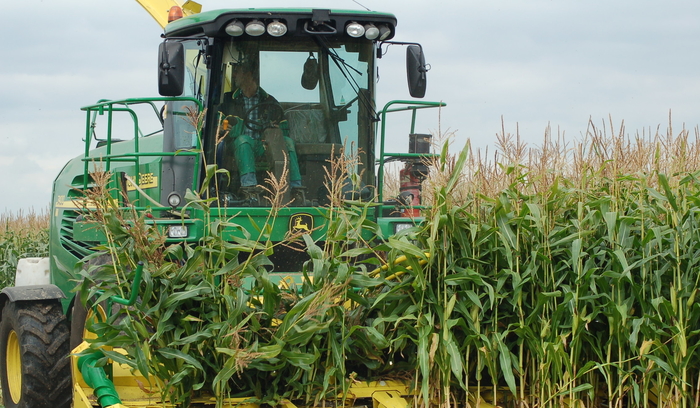For farmers faced with some significant challenges this winter, the first results of maize silage analysed by Trouw Nutrition offer a degree of encouragement.
Despite a difficult start to the season, with many crops drilled late and earlier established crops struggling to get away strongly due to low soil temperatures, the silages produced compare well to previous years and show maize can be a reliable and consistent source of good quality forage.
Summarising the first 835 samples analysed by the company, which makes it the largest and most representative picture of maize quality in the UK, Ruminant Technical Development Manager Dr Liz Homer says maize crops should feed well this winter and complement grass silages well.
“Dry matter content is similar to last year on average at 32.6% which suggests crops were generally mature at harvest and taken in good conditions,” Dr Homer observes. “ME and D value are slightly lower but feeds are averaging 11.08MJ/kgDM while starch is 3% higher than last year at 33.3%.
Starch degradability
She comments that while starch degradability is similar to last year at 78.4%, there is a range across the samples, largely dependent on dry matter. She explains that usually starch degradability increases with time in the clamp, affecting how maize will feed.
“In wetter silages, starch degradability is generally higher initially and will not change as much with time in the clamp. Higher dry matter crops will change more with time becoming more degradable.
“Starch which remains undegraded moves through as bypass starch which will provide a digestible energy source in the intestine. With generally elevated starch content, we will see good levels of bypass starch in all crops.”
Dr Homer says that overall this year’s maize has lower levels of both Rapidly and Total Fermentable Carbohydrates. However, they will certainly help fire up rumen fermentation overall to help complement the higher fibre grass silage. In addition, the lower acid load means maize will feed well with any higher energy early first cut grass or any high acid load grass silages.
Good clamp management
She advises good clamp management will be important particularly with drier crops and recommends regular analysis , particularly to monitor starch degradability so that rations can be fine-tuned accordingly
“Farmers who are able to feed maize should be able to improve production from forage and rumen health to help maximise the use of grass silage and offset higher purchased feed costs,” Dr Homer concludes.


